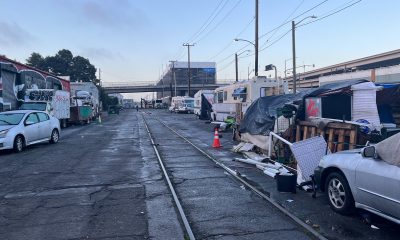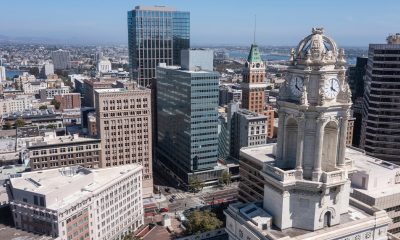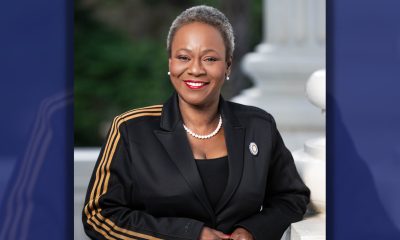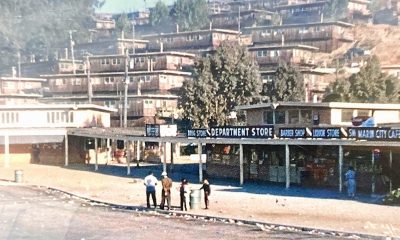Activism
Mayor Breed Declares State of Emergency in Tenderloin as Part of Crackdown Efforts
“The emergency declaration is really about removing obstacles so that we can go in and conduct the work we need to do [to] help the residents of the Tenderloin. Our goal is to get those services coordinated as quickly as we can in order to alleviate the overall suffering that people are experiencing in the neighborhood,” said Department of Emergency Management Executive Director Mary Ellen Carroll.

San Francisco (BCN)
San Francisco Mayor London Breed doubled down on efforts to crack down on public drug use and other disturbances in the city’s Tenderloin, announcing an official State of Emergency in the neighborhood Friday.
According to Breed’s office, the emergency declaration would work similarly to the city’s COVID-19 Declaration of Emergency and allow the city to respond to health and safety concerns on the streets quickly and without bureaucratic barriers.
Specifically, the declaration allows the city to waive rules around contract procurement and zoning codes in order to quickly open a “linkage site” to voluntarily connect people who are living on the streets and struggling with substance use and mental health issues to services.
The declaration comes just two days after Breed, along with emergency and law enforcement officials, announced several new initiatives to address the neighborhood’s health and safety concerns, including public drug use and illegal street vendors selling stolen items.
“When we look at the conditions on our streets it is really unfortunate; it is sad; it’s heartbreaking,” Breed said during a briefing Friday at City Hall. “We have to move quickly. Too many people are dying in this city. Too many people are sprawled out all over our streets. And now we have a plan to address it.”
According to Breed, an emergency response is needed in the area, as the opioid drug crisis has worsened in recent years, with the highly addictive synthetic opioid fentanyl contributing to a sharp rise in overdose deaths.
“This is necessary in order to see a difference, in order to reverse some of the deaths from overdoses, and the assaults and attacks happening in this community,” she said. “When people walk down the streets of San Francisco, they should feel safe. They shouldn’t have to look over their shoulders; they shouldn’t have to be punched in the face randomly; they shouldn’t have to see someone sticking a needle in various parts of their body; they shouldn’t have to see someone laying out in the street…”
The Board of Supervisors must approve the emergency declaration within the next week, and if approved, the declaration would last for 90 days, according to Breed’s office.
Supervisor Matt Haney, whose district includes the Tenderloin, is in support of the declaration.
“The overdose epidemic is taking the lives of nearly two people a day in our city. Most of those people are in the Tenderloin and South of Market and mostly from fentanyl,” he said. “As the supervisor of the Tenderloin, but also as a resident of the Tenderloin, we need an emergency crisis-level response to confront this deadly epidemic at the scale of the problem that we’re facing.”
Department of Emergency Management Executive Director Mary Ellen Carroll said the linkage site will not only help people coordinate health services from community organizations and the San Francisco Department of Public Health, but the site will also help people get food, hygiene products, and connect them with housing programs.
“The emergency declaration is really about removing obstacles so that we can go in and conduct the work we need to do [to] help the residents of the Tenderloin. Our goal is to get those services coordinated as quickly as we can in order to alleviate the overall suffering that people are experiencing in the neighborhood,” she said.
On Wednesday, Breed announced the Tenderloin Emergency Intervention plan, which involves several approaches to address the crime and public drug use and improve the neighborhood. Part of that is increasing the police presence in the area.
In addition, Breed on Wednesday proposed amending the city’s Surveillance Technology Ordinance — passed in by supervisors in 2019 — to allow police to access more surveillance cameras throughout the city. She also proposed increased funding for law enforcement training, hiring, and increased overtime.
“At the end of the day, the people in this community are not safe and it’s not right. Part of the response to this is definitely police officers,” Breed said Friday.
“We have to arrest drug dealers. We have to arrest people who are assaulting people,” Police Chief William Scott said. “Our officers have said time and time again, ‘Let’s have a system where we can get the social workers involved,’ and that’s exactly what this does at the front end so that we can go and do all the things that the public wants us to do: arrest people who are hurting people; stop the open-air drug use; and stop some of the craziness that’s going on in our streets.”
On Friday, the group Defund SFPD Now criticized Breed’s newly announced initiatives.
“The mayor’s plan includes moves to appropriate additional money to the San Francisco Police Department, expand coordinated sweeps of unhoused people, expand surveillance, and target unlicensed street vendors. While we believe in doing whatever we can to secure basic resources and dignity, Mayor Breed’s latest proposal deflects from the failures of the city’s neoliberal policies by imprisoning vulnerable people in the Tenderloin,” Defund SFPD Now said in a statement.
“We are disappointed that Mayor Breed would use the declaration of a state of emergency to increase the reach of criminalization rather than using it to meet people’s needs with respect and compassion,” the group said.
Activism
Oakland Post: Week of April 17 – 23, 2024
The printed Weekly Edition of the Oakland Post: Week of April 17 – 23, 2024

To enlarge your view of this issue, use the slider, magnifying glass icon or full page icon in the lower right corner of the browser window. ![]()
Activism
Oakland Schools Honor Fred Korematsu Day of Civil Liberties
Every Jan. 30, OUSD commemorates the legacy of Fred Korematsu, an Oakland native, a Castlemont High School graduate, and a national symbol of resistance, resilience, and justice. His defiant stand against racial injustice and his unwavering commitment to civil rights continue to inspire the local community and the nation. Tuesday was “Fred Korematsu Day of Civil Liberties and the Constitution” in the state of California and a growing number of states across the country.
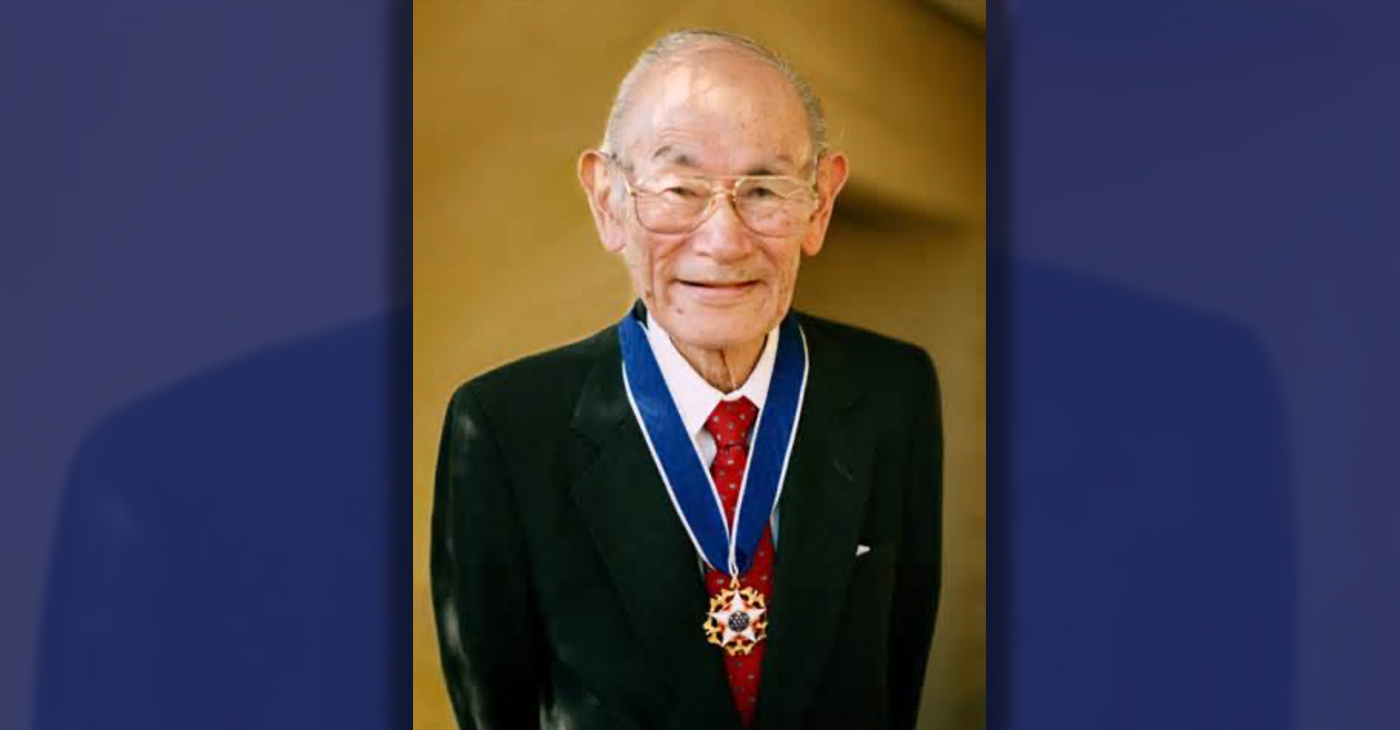
By Post Staff
Every Jan. 30, OUSD commemorates the legacy of Fred Korematsu, an Oakland native, a Castlemont High School graduate, and a national symbol of resistance, resilience, and justice.
His defiant stand against racial injustice and his unwavering commitment to civil rights continue to inspire the local community and the nation. Tuesday was “Fred Korematsu Day of Civil Liberties and the Constitution” in the state of California and a growing number of states across the country.
One OUSD school is named in his honor: Fred T. Korematsu Discovery Academy (KDA) elementary in East Oakland.
Several years ago, founding KDA Principal Charles Wilson, in a video interview with anti-hate organization “Not In Our Town,” said, “We chose the name Fred Korematsu because we really felt like the attributes that he showed in his work are things that the children need to learn … that common people can stand up and make differences in a large number of people’s lives.”
Fred Korematsu was born in Oakland on Jan. 30, 1919. His parents ran a floral nursery business, and his upbringing in Oakland shaped his worldview. His belief in the importance of standing up for your rights and the rights of others, regardless of race or background, was the foundation for his activism against racial prejudice and for the rights of Japanese Americans during World War II.
At the start of the war, Korematsu was turned away from enlisting in the National Guard and the Coast Guard because of his race. He trained as a welder, working at the docks in Oakland, but was fired after the bombing of Pearl Harbor in 1941. Fear and prejudice led to federal Executive Order 9066, which forced more than 120,000 Japanese Americans out of their homes and neighborhoods and into remote internment camps.
The 23-year-old Korematsu resisted the order. He underwent cosmetic surgery and assumed a false identity, choosing freedom over unjust imprisonment. His later arrest and conviction sparked a legal battle that would challenge the foundation of civil liberties in America.
Korematsu’s fight culminated in the Supreme Court’s initial ruling against him in 1944. He spent years in a Utah internment camp with his family, followed by time living in Salt Lake City where he was dogged by racism.
In 1976, President Gerald Ford overturned Executive Order 9066. Seven years later, the 9th Circuit Court of Appeals in San Francisco vacated Korematsu’s conviction. He said in court, “I would like to see the government admit that they were wrong and do something about it so this will never happen again to any American citizen of any race, creed, or color.”
Korematsu’s dedication and determination established him as a national icon of civil rights and social justice. He advocated for justice with Rosa Parks. In 1998, President Bill Clinton gave him the Presidential Medal of Freedom saying, “In the long history of our country’s constant search for justice, some names of ordinary citizens stand for millions of souls … To that distinguished list, today we add the name of Fred Korematsu.”
After Sept. 11, 2001, Korematsu spoke out against hatred and discrimination, saying what happened to Japanese Americans should not happen to people of Middle Eastern descent.
Korematsu’s roots in Oakland and his education in OUSD are a source of great pride for the city, according to the school district. His most famous quote, which is on the Korematsu elementary school mural, is as relevant now as ever, “If you have the feeling that something is wrong, don’t be afraid to speak up.”
Activism
WOMEN IMPACTING THE CHURCH AND COMMUNITY
Juanita Matthews, better known as “Sister Teacher,” is a walking Bible scholar. She moved to California from the great state of Arkansas in 1971. Sister Teacher has a passion for teaching. She has been a member of Bible Fellowship Missionary Baptist Church since 1971.
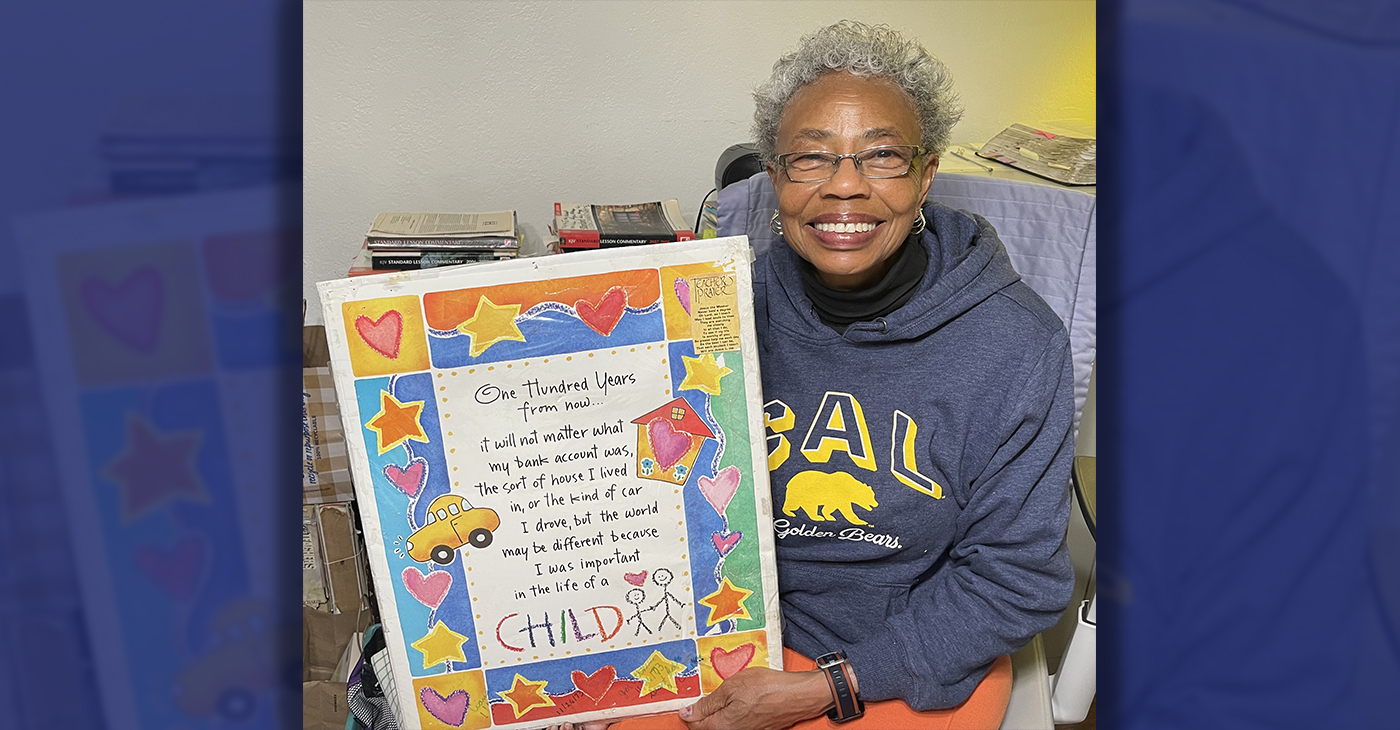
Sister Juanita Matthews
55 Years with Oakland Public School District
The Teacher, Mother, Community Outreach Champion, And Child of God
Juanita Matthews, better known as “Sister Teacher,” is a walking Bible scholar. She moved to California from the great state of Arkansas in 1971. Sister Teacher has a passion for teaching. She has been a member of Bible Fellowship Missionary Baptist Church since 1971. She followed her passion for teaching, and in 1977 became the lead teacher for Adult Class #6. Her motto still today is “Once My Student, Always My Student”.
Beyond her remarkable love for the Lord, Sister Teacher has showcased her love for teaching by working for the Oakland Unified School District for 55 years, all but four of those years spent at Emerson Elementary and Child Development School. She truly cares about her students, making sure they have the tools/supplies needed to learn either at OUSD or Bible Fellowship Missionary Baptist Church.
She’s also had a “Clothes Closet Ministry” for 51 years, making sure her students have sufficient clothing for school. The Clothes Closet Ministry extends past her students, she has been clothing the community for over 50 years as well. She loves the Lord and is a servant on a mission. She is a loving mother to two beautiful children, Sandra and Andre. This is the impact this woman of God has on her church and the community.
-

 Activism4 weeks ago
Activism4 weeks agoOakland Post: Week of March 27 – April 2, 2024
-
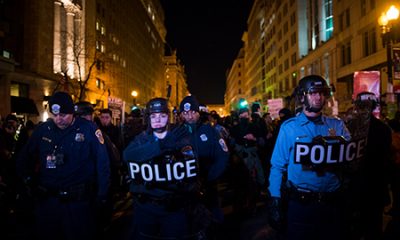
 #NNPA BlackPress4 weeks ago
#NNPA BlackPress4 weeks agoCOMMENTARY: D.C. Crime Bill Fails to Address Root Causes of Violence and Incarceration
-

 #NNPA BlackPress4 weeks ago
#NNPA BlackPress4 weeks agoFrom Raids to Revelations: The Dark Turn in Sean ‘Diddy’ Combs’ Saga
-

 #NNPA BlackPress4 weeks ago
#NNPA BlackPress4 weeks agoCOMMENTARY: Lady Day and The Lights!
-

 #NNPA BlackPress4 weeks ago
#NNPA BlackPress4 weeks agoMayor, City Council President React to May 31 Closing of Birmingham-Southern College
-

 #NNPA BlackPress4 weeks ago
#NNPA BlackPress4 weeks agoBaltimore Key Bridge Catastrophe: A City’s Heartbreak and a Nation’s Alarm
-
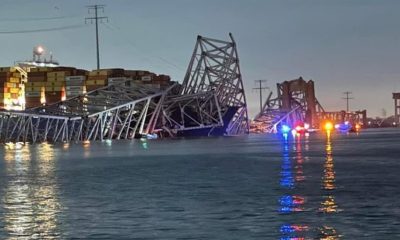
 #NNPA BlackPress4 weeks ago
#NNPA BlackPress4 weeks agoBaltimore’s Key Bridge Struck by Ship, Collapses into Water
-

 #NNPA BlackPress4 weeks ago
#NNPA BlackPress4 weeks agoBeloved Actor and Activist Louis Cameron Gossett Jr. Dies at 87

